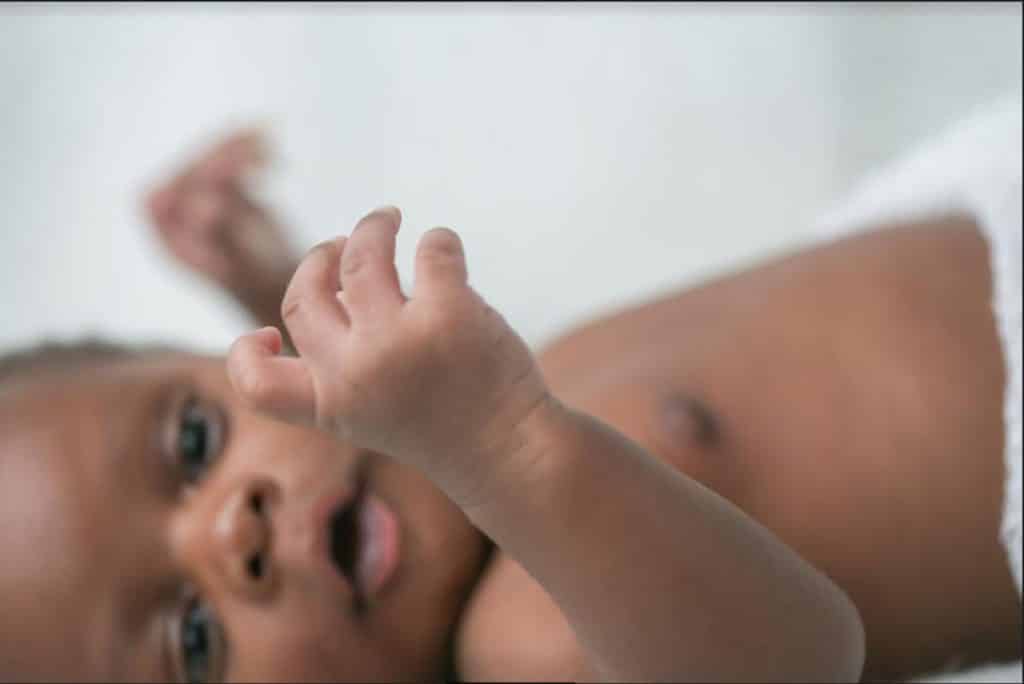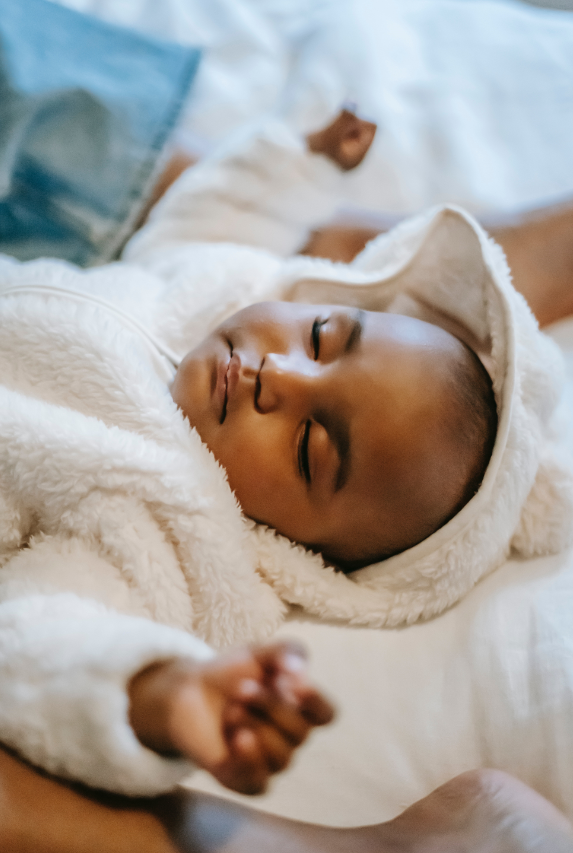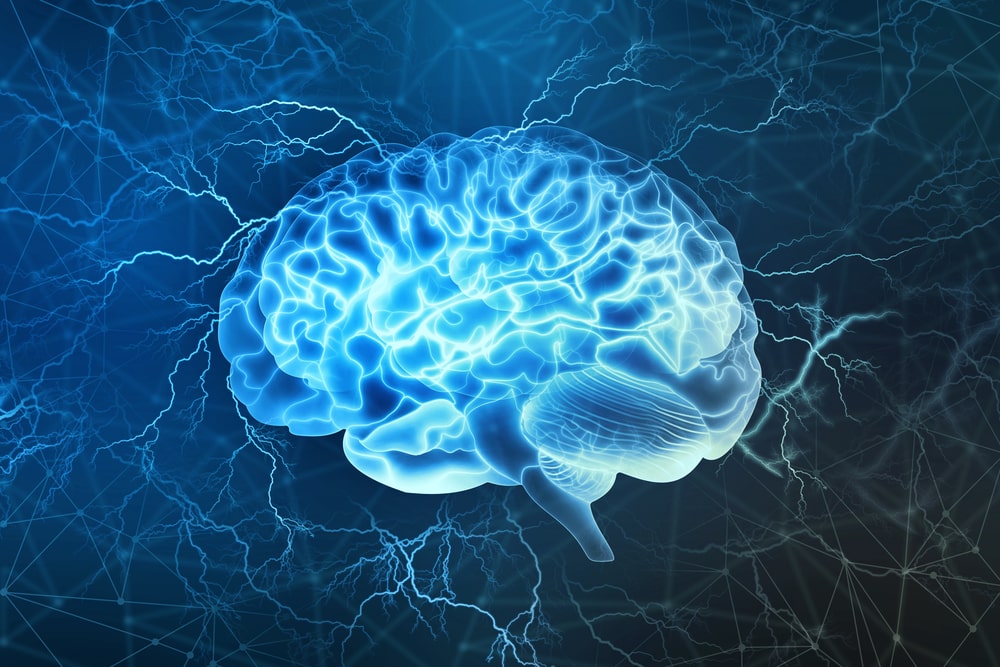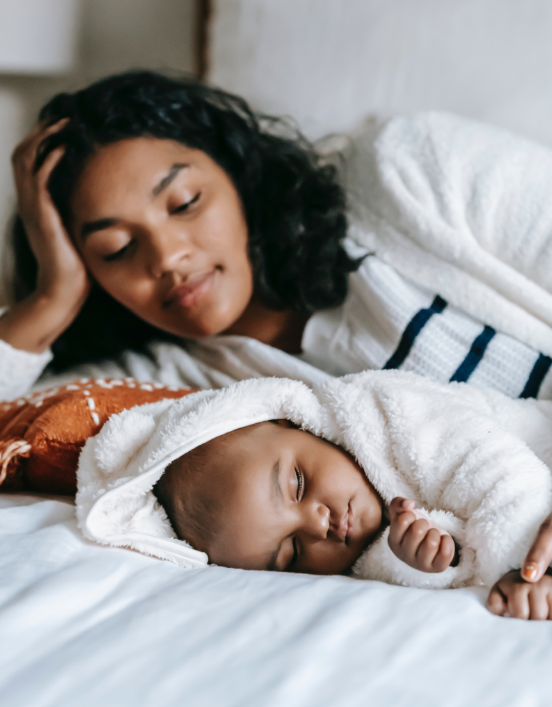A sleeping baby is usually peaceful and calm. You get to appreciate more of your baby’s beauty when you watch them sleep. Some babies are even called “sleeping beauties.” As a new parent, you will be watching for your baby’s activities. You want to know when they sleep, how long they sleep, and why newborns twitch in their sleep.

When you watch your baby sleep, you will see that they are so calm and relaxed; undisturbed by the events in their immediate surroundings. Apart from the calmness you noticed, you might have also noticed some movements in your baby when they sleep. You are likely reading this article because you are concerned about the things you see when your little one is asleep.
Don’t worry, we got you covered.
In this article, you will learn all there is to know about babies twitching in their sleep. You will know what it means for your baby to twitch while sleeping; what causes it, the abnormal twitches you should watch out for, and when to call for help.
What is sleep twitching?
Twitching is an involuntary contraction of the muscles. It is usually brief. In fact, most muscle twitches go unnoticed. Sleep twitch is a sudden but brief involuntary and arrhythmic muscle contraction that occurs when the baby is beginning to fall asleep. This may cause the baby to suddenly wake up for a moment.

Researchers often refer to sleep twitching as sleep myoclonus. This twitching can affect a muscle or a group of muscles. Another form of twitching or myoclonus is hiccups. In hiccups, the affected muscle is the diaphragm.
It has also been found that this twitching during sleep is common in children who are developing good sensorimotor skills. Most of the time, when your baby twitches, it is more of a positive signal than a negative one.
What causes newborns to twitch during their sleep?
If you have been observing your baby well, you will notice that they sleep a lot. I mean a whole lot! On average, babies spend about 14 to 17 hours of their entire 24 hours sleeping. It is during these hours of sleep that you would have noticed their muscles twitch.
Over time, some parents have assumed these twitches as a sign that their baby is having a good dream. This is possible, especially when the twitch is around the mouth or lips, and results in a smile.
Muscle twitch occurs when your baby is just starting to sleep. It may be caused by some external factors such as noise, light intensity, or movements around them. As soon as they are deeply asleep, these twitches may stop.

Twitching can be a sign of healthy development of brain circuits. This means that the communication path in the brain responsible for these movements is developing well. Muscle twitches can occur in any part of the body, including the eyes, eyelids, cheeks, mouth, head, fingers, arms, toes, and legs.
Research has also shown that there may be a link between the part of the body that is twitching and the next motor skill your baby is developing. For instance, there may be more twitching in the wrist and fingers when your baby is learning to reach for things. Similarly, twitching in the neck region may be prevalent when your baby is learning to support their head while they are awake.
When to worry about twitching in sleep:
Not all twitches are a sign of good sensorimotor development. It is good to know when you should be concerned and when there’s nothing to worry about.

You should be concerned about your baby’s twitches if, after waking up, the twitching still persists. If your baby twitches only while they are asleep, then there’s no need to worry. Twitching while awake may be a symptom of a seizure disorder. A seizure disorder can be in a different form, which includes:
- Benign familial neonatal convulsions. This kind of seizure is seen in an otherwise healthy baby with no other medical or neurologic problems. It starts within the first few days of life and stops around 4 to 6 months of age. The seizure can involve one or both sides of the brain. Signs of benign familial neonatal convulsions include muscle rigidity, convulsions, and loss of consciousness.
- Epilepsy: This is another type of neurological problem that makes people prone to having seizures. It causes recurrent seizures for reasons that may be known or unknown, depending on the case.
- Infantile spasms: It is a form of epilepsy that affects children under 12 months. It is more prominent between 4 to 8 months of age. During infantile spasms, the body becomes stiff while the extremities (the arms, legs, and head) may bend forward.
- Febrile seizures: Febrile seizures are seizures accompanied by very high body temperatures. It usually occurs during an illness.
When to call for help
You should call for help or see a doctor immediately if you notice any of the following:
- If the twitch is accompanied by abnormal eye movement. As other parts of the body twitch, if you notice any abnormal movement of the eye, it may be an indicator of a true seizure.
- Also, if the baby twitches, you notice that there is a problem with their breathing, or they turn grey, blue, or purple, you should see a doctor.
- A normal muscle twitch occurs in a few seconds. It is so short that it can go unnoticed. If your baby’s twitch lasts for as long as five minutes, you should see a doctor.
Conclusion
As your baby grows, you need to monitor their progress closely, and also observe them for new signs that can be normal or abnormal. If you are a first-time mom, it’s possible that most of these signs can get you concerned. You can write down these signs, the times that you notice them, and the things that trigger them, and discuss them with your doctor. Remember that your baby cannot explain verbally what the problem is.
The better observer you become, the better for your baby.

